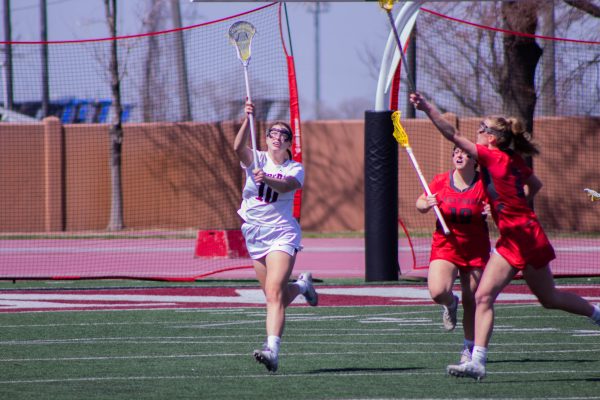Running to regionals
Cross country runners make headway going into NCAA D-III Central Regional meet.
November 9, 2016
With a string of successes to end the regular season, men’s and women’s cross country hope to hit the ground running in the NCAA Division III Central Regional meet Nov. 12. Both teams broke records at the Fall Finale meet on Nov. 4, putting Hamline in a competitive spot in the pack.
As Alex Ozark, Peter Fry and Jason Marshall surpassed their personal records for men’s, Kallie Liston and Bernadette Hayden had their best times for women’s. Amongst these records, several athletes placed in their event. Sean Ahlness placed 42nd on the men’s team; Alyssa Nash finished eighth and Kallie Liston was ninth in the women’s mixed 8k.
Only the top seven runners from each team are allowed to participate in this meet.
“The men and women have a good shot of finishing in the top 12,” cross country Head Coach Devin Monson said. “There’s not a big difference between a team that finishes sixth and a team that finishes twelfth. It’s whose stubborn enough at the end to get those last few places. In the span of five seconds 30 people will cross the finish line, and we want to be on the good end of those five seconds.”
In this season the teams have been able to move up two places in the conference and hope to see that reflected in the regional meet. However, obstacles still remain.
There are disadvantages to having such young teams. Whereas 15 of the top 30 places in the MIAC Championships belong to seniors, the majority of Hamline’s teams are made up of underclassmen: five first-years, ten sophomores and seven juniors. Seniors have advantages in these meets as they have already raced the courses three times, and prepare for various aspects of the course.
“It really shows that knowing the course is beneficial to you being successful,” Monson said. “We only have one senior in our top seven on both the men’s and women’s side and having a younger team makes it harder to compete.”
The teams have been combating their inexperience by taking advantages wherever they can. One of the main ways they accomplish this is by using downhills to gain speed and pass other runners. They were able to successfully do this at the conference championships and hope to apply it to their regional meet.
Another strategy assistant coaches Chris Lutz, Andrea Haus and Brendan Ruter have emphasized this season is pact running, where athletes run together in order to draw on each other’s strengths and push one another.
“At regionals, we need to stay together for longer and keep in contact with their pack. Then they can take more risks.” Monson said.
Pack running can create mental toughness in races because runners have support from their team. Some call running a mental sport, reasoning that it requires a high level of mental strength to push one’s self through a race. In addition, the team hopes to put their worries aside leading up to the race.
“We need to be relaxed, because if you are constantly worrying you are just wasting energy. They might even be joking up to the line. As soon as the gun is about to go, they can flip into competitive mode,” Monson said. “If I can keep them relaxed until the line, that’s the main goal for me.”
All of these strategies are applied in practice to ensure their success at regionals. Practices have changed in preparation for their upcoming meet by decreasing mileage.
“The women cut down their mileage quite a bit, only running 35-40 miles per week. The men will go down to 50-80 miles per week,” Monson said. “We have been increasing the pace. If they think they are recovering, there will be a drastic change of pace when the gun goes off.”
With all the preparation the team has done the only thing left to do is race. The NCAA Division III Regional meet takes place on Nov. 12 at 11:00 a.m. in Northfield, MN.
Monson’s advice to his runners: “Just live in the moment you are running.”



